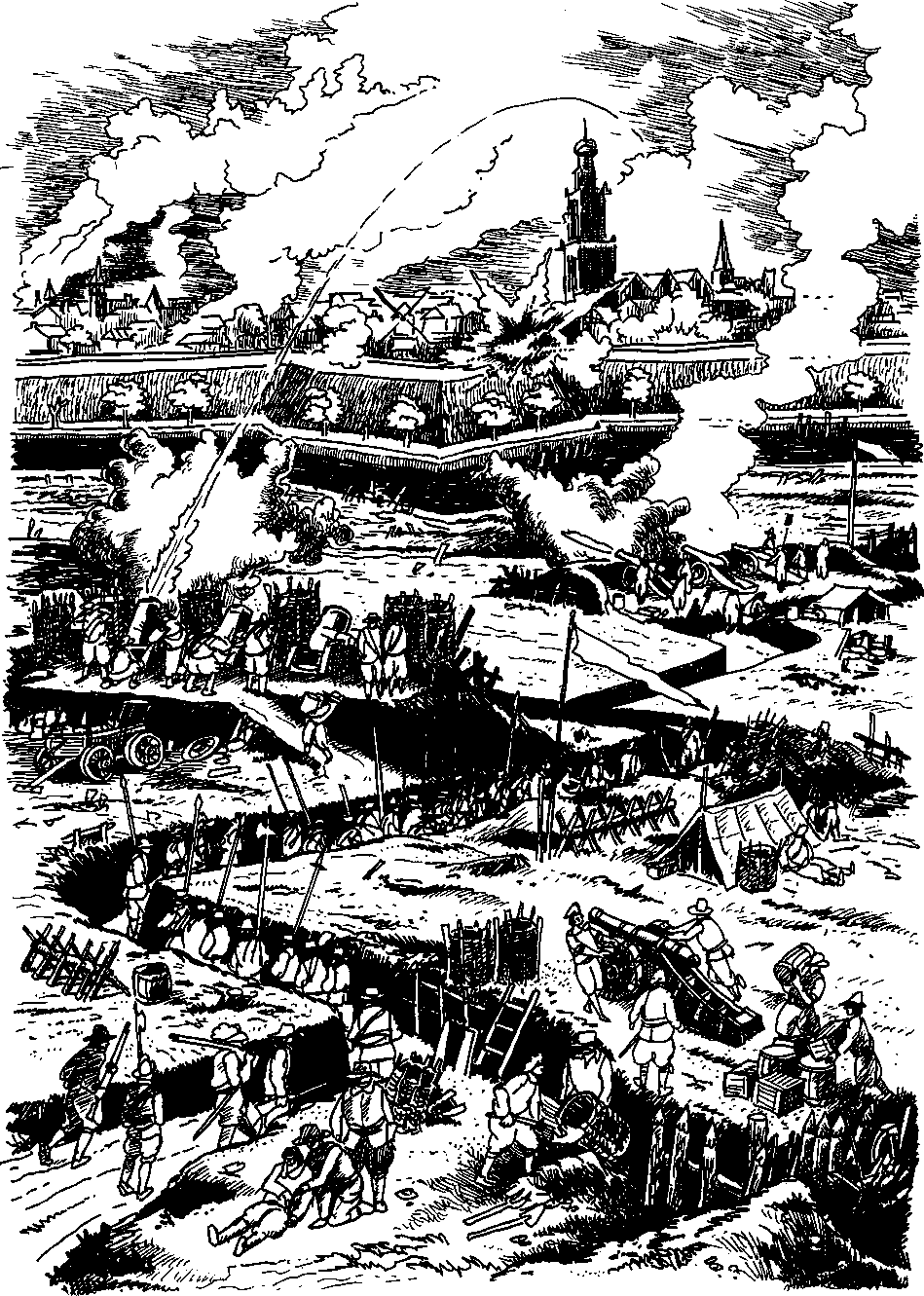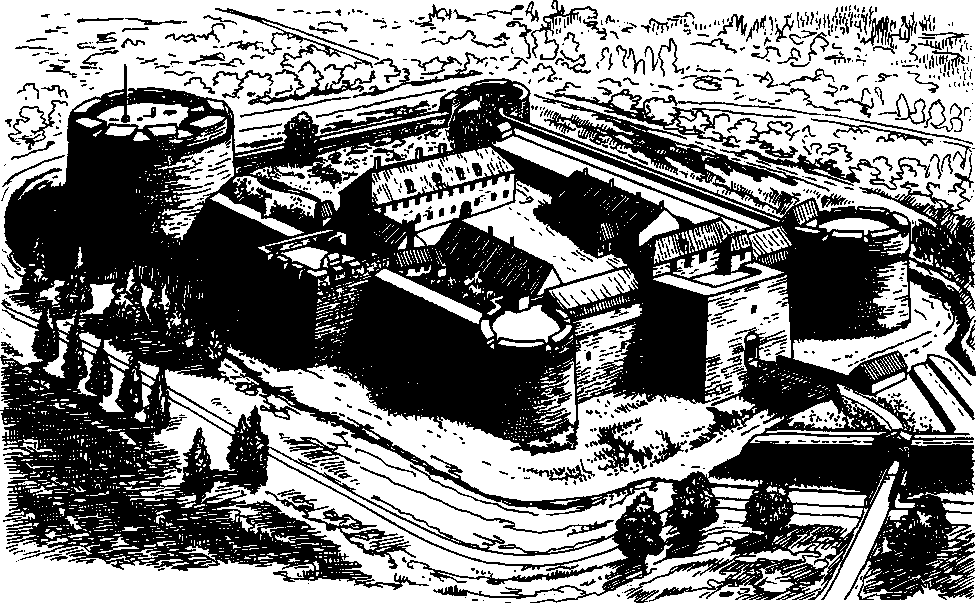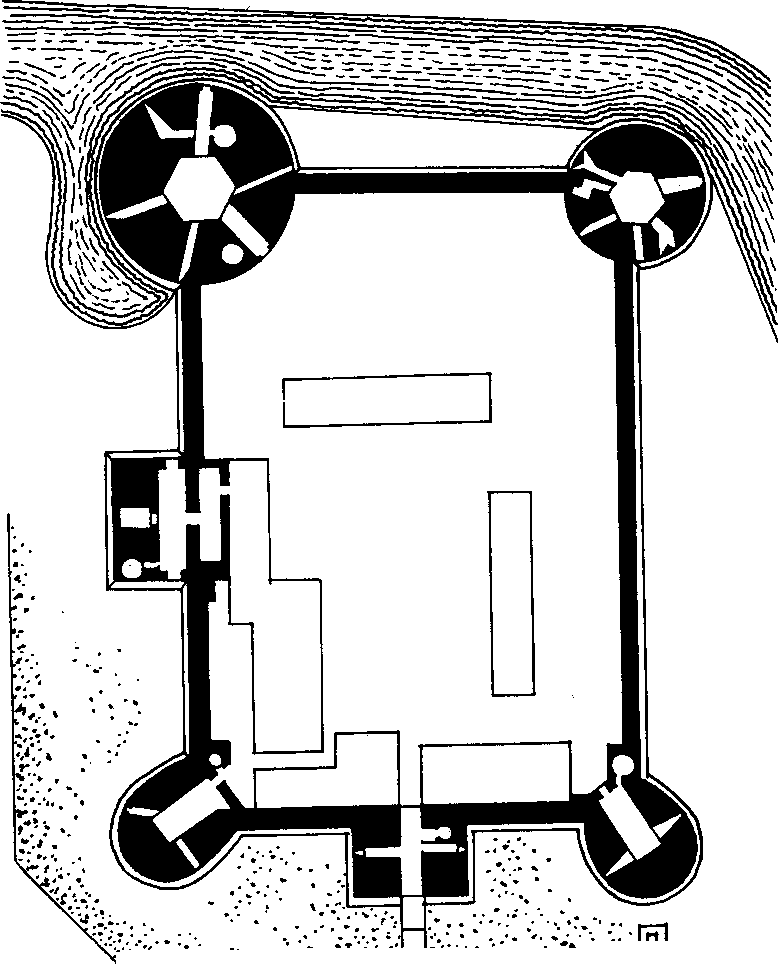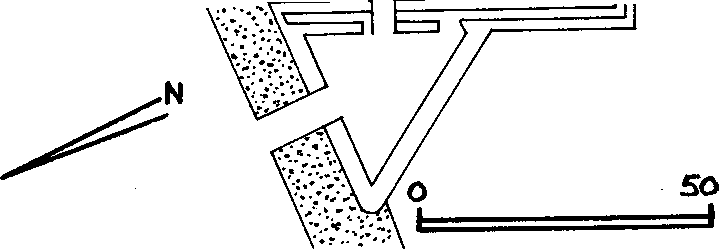

Castle Ham (France). Castle Ham, situated near Peronne in the Somme, was completed by 1480. Adapted to firearms, it was a regular rectangle characterized by a deep ditch, low and thick walls, massive casemated artillery towers and a huge donjon called the Tour du Connetable with walls 11 m thick. The fortress was still in military use in the 17th century and became a state prison in the 19th century. The most famous prisoner was prince Louis-Napoleon Bonaparte (the future emperor Napoleon III), who managed to escape in 1846. The fort of Ham was destroyed by the Germans in 1917.
Problems and demanded structural arrangements. A large gun was heavy and cumbersome and required a rather large emplacement that not only provided enough room for ammunition and accessories, but also allowed freedom of movement for muzzle loading and accommodated the recoil force of the gun. Release of toxic smoke was also a problem, and gun emplacements had to be easily accessible for supply purposes. Obviously not all citadel, town or castle combat emplacements were suitable for mounting cannon. The curtain wall-walk might be too narrow to permit safe recoil, or tower floors might be too weak to bear the considerable weight, or the stoutest roofed and easily strengthened part of the building might not command a good field of fire. For these reasons and more, new and suitable artillery emplacements had to be created.
The question was, where to do so? Not all towers could be cut down (those for example serving as living
Accommodations, or those made necessary by high ground in the vicinity), and transforming a wall into a rampart was sometimes impossible because of lack of space inside the stronghold. In many cases such problems resulted in the creation of artillery emplacements outside the place in gun platforms called bulwarks.
The term bulwark is a corruption of the Dutch word bolwerk, which originally meant an earth entrenchment. Called boulevard in French, bollwerk in German and balovardo in Italian, the bulwark might be either an earth rampart or a masoned wall around the whole ancient medieval enceinte, or a simple entrenchment reinforcing a vulnerable point. In whatever material, shape, size and dimension, it presented many advantages. Its dimensions were calculated for the placement, supply and firing of artillery. Situated outside the enceinte, the bulwark created an additional line of defense and increased the range of the guns. Its profile was generally low in order to


Ground-plan, castle Ham (France)
Maximize grazing fire. It offered space where the besieged might regroup for withdrawal or a sally. It worked as a shield protecting the escarp of the main enceinte, and it put the inside of the castle—or the suburb of a city—out of range of enemy artillery. The bulwark was relatively cheap to build if constituted of rampart (thin masonry retaining thick earth).
When urban fortifications were dismantled in a later period, the bulwark got its modern meaning; It was turned into a boulevard or an avenue, a wide lane with trees alongside.
The bulwark might also be an ancient tower that had been lowered, or a totally new work constructed to reinforce a weak part of the wall. In that case the bulwark was a low, strongly masoned artillery tower. This work was occasionally circular but more often U-shaped, and projecting in order to flank curtain and ditch. It was called a roundel, rondelle, Bastei or basteja in northern Europe, bastillon in France and tor-rionne in Italy. Its summit was arranged as a platform with gun embrasures and sometimes fitted with crenellation and machicolation (reflecting the strength of earlier medieval traditions).




 World History
World History









